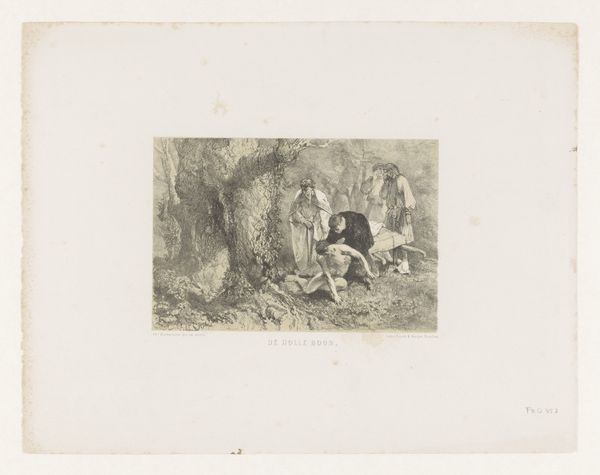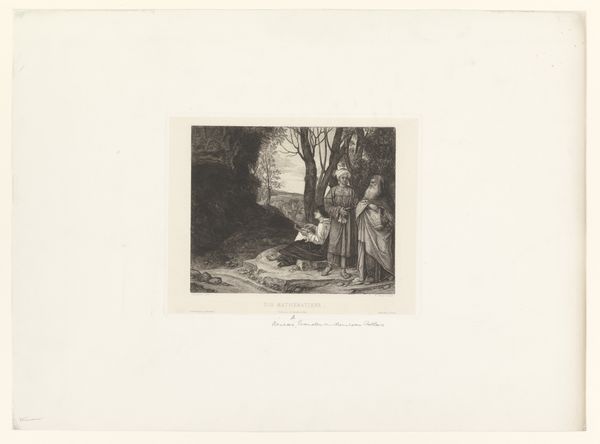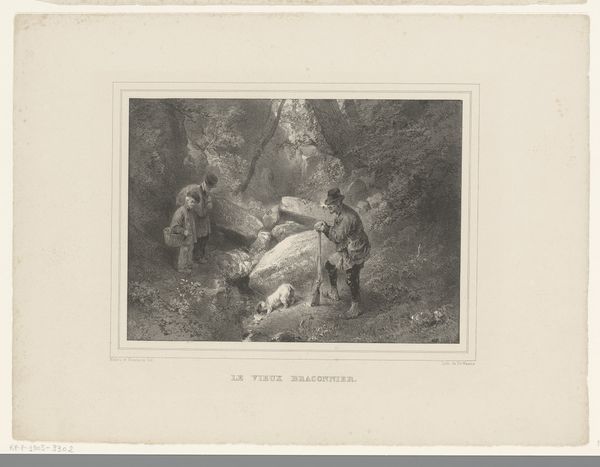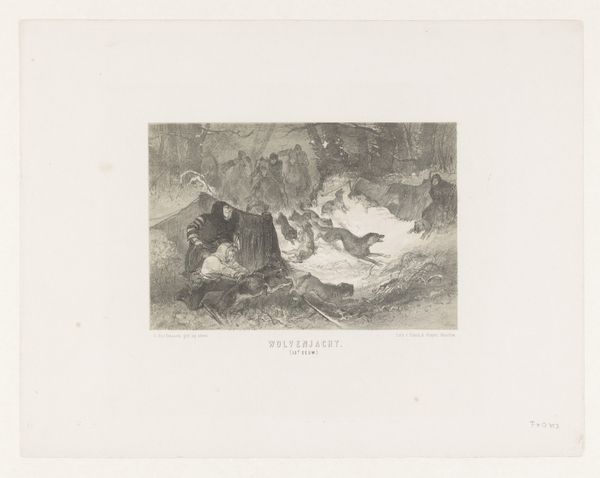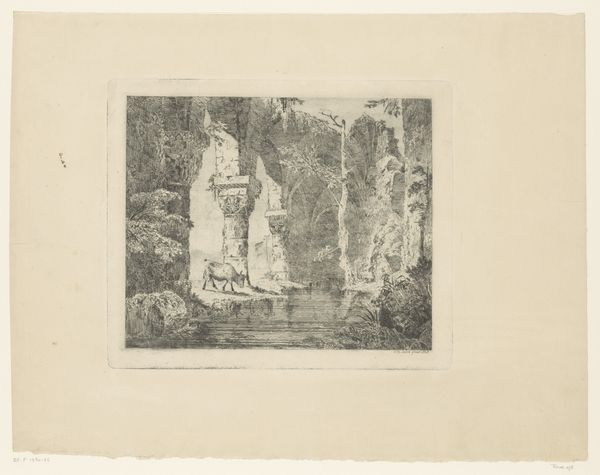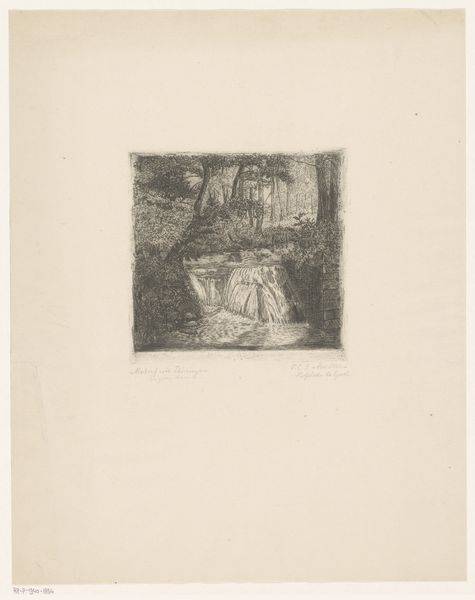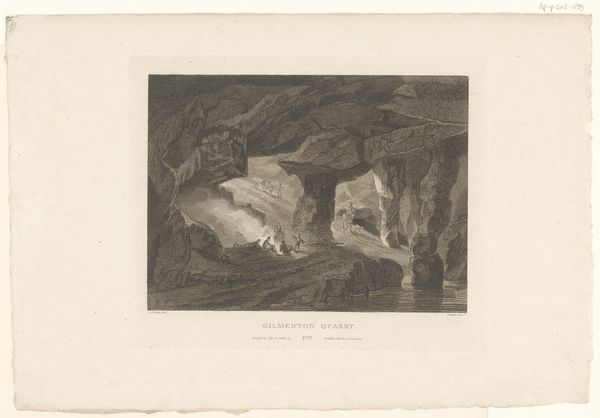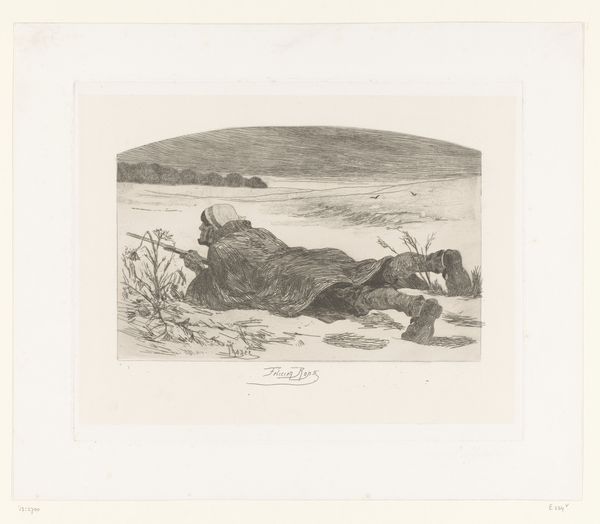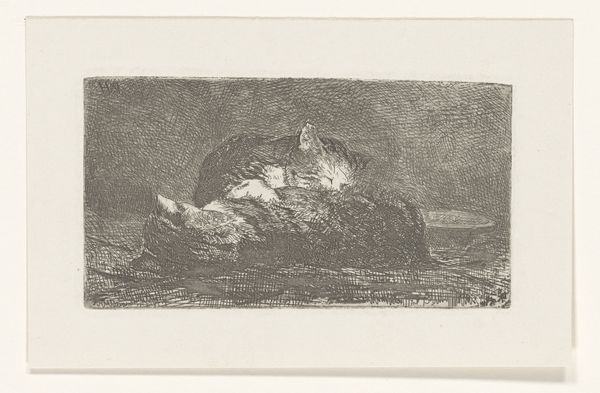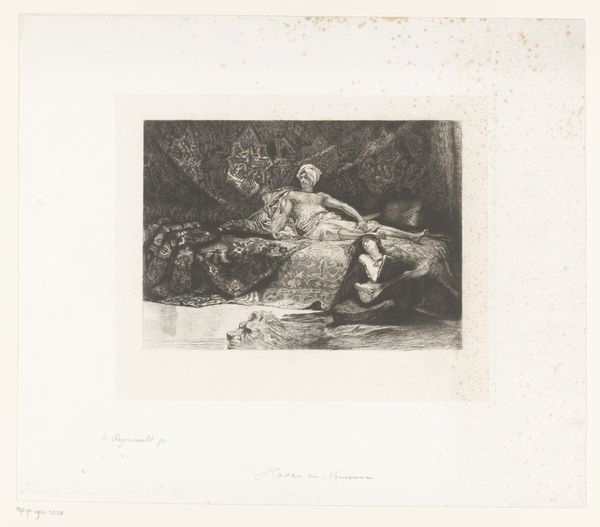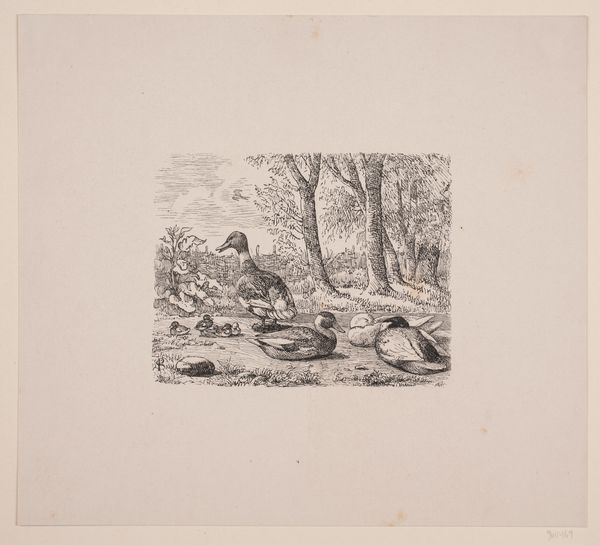
drawing, graphite
#
drawing
#
landscape
#
pencil drawing
#
romanticism
#
graphite
#
realism
Dimensions: height 330 mm, width 455 mm
Copyright: Rijks Museum: Open Domain
Curator: Here we have Barend Cornelis Koekkoek's "Drinkplaats," a drawing from between 1829 and 1830. It’s a graphite and pencil work currently residing here at the Rijksmuseum. Editor: Immediately, I see a place of rest, refuge almost. The subtle gradations achieved with the pencil create a peaceful yet somber atmosphere. The dark surrounding foliage almost swallows the scene. Curator: That’s quite perceptive. Considering the historical context, landscape art like this reflects the rise of Romanticism. Koekkoek and his contemporaries were responding to rapid industrialization by idealizing and emphasizing the beauty and solace of untouched nature. What does this "drinkplaats" offer? Editor: It’s fascinating how the symbol of water—essential for life, cleansing—is centrally placed, framed by that overgrowth. Fountains themselves, across cultures, have represented purification, the source of knowledge. Could this image speak to finding inner peace amidst chaos? Curator: Absolutely. Think about the socio-economic shifts of the era. Urban populations exploded. Rural communities fractured. Landscapes themselves were radically altered by industry. Art became a site for mourning these losses but also for imagining alternative realities. It’s a visual argument for conservation and preservation. The level of detail given to the leaves and shrubbery also speaks to close observation of the artist’s surroundings. Editor: It is interesting how, despite its realism, there is a curated artifice to the composition, suggesting an intervention on untamed nature to make a pleasant resting place. The dark bushes almost loom, however. Curator: I appreciate that reading of the scene's tension. Koekkoek gives us nature's beauty, but a beauty increasingly threatened. The drawing becomes a quiet act of resistance against that tide. It is both aesthetically pleasing and has great historical importance to the rising movements of social reforms to provide accessible clean water and green space for city inhabitants. Editor: I see so many layers intertwined in this seemingly simple image. From the romanticized idea of nature to the undercurrent of loss and conservation efforts. Curator: Indeed. The artist used such precision and nuance, capturing both the idyllic and the anxieties of his era in a way that continues to resonate.
Comments
No comments
Be the first to comment and join the conversation on the ultimate creative platform.
